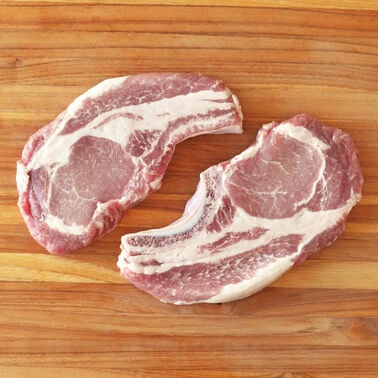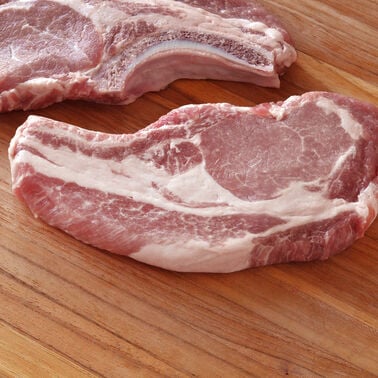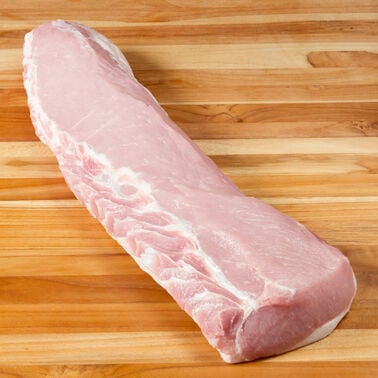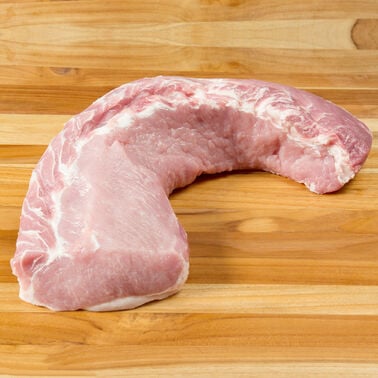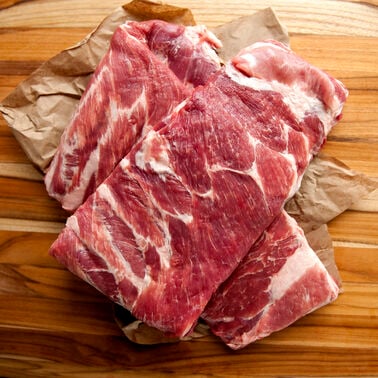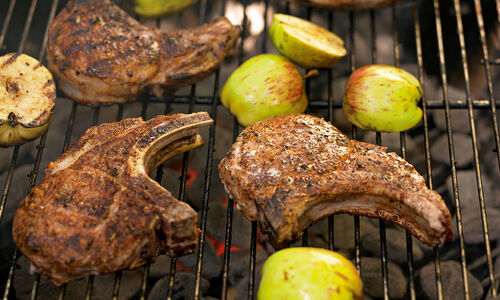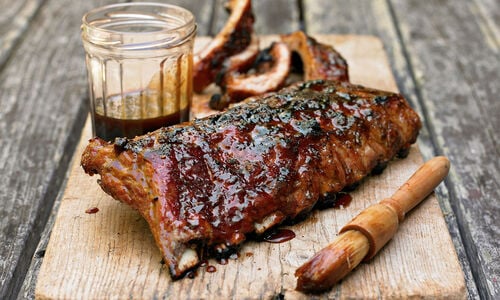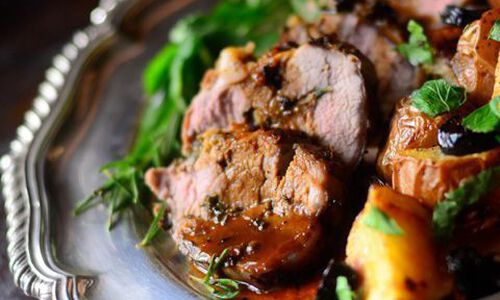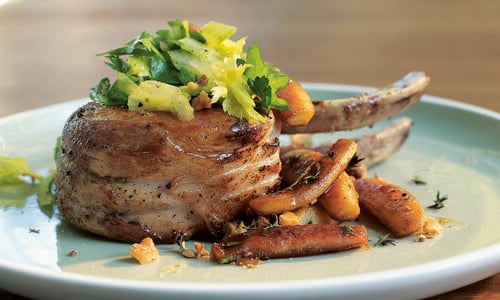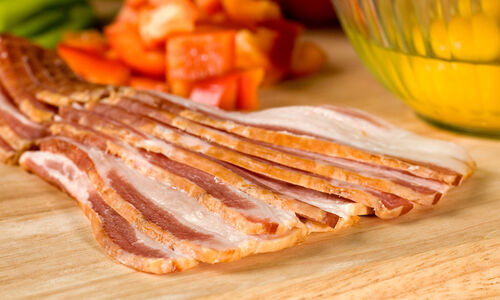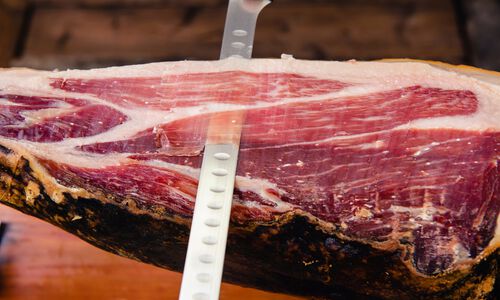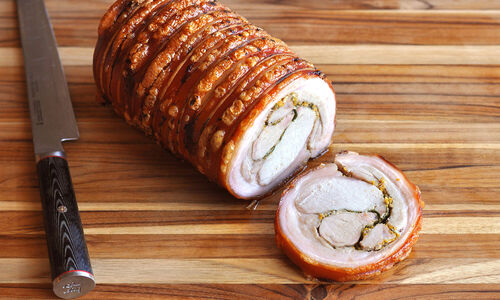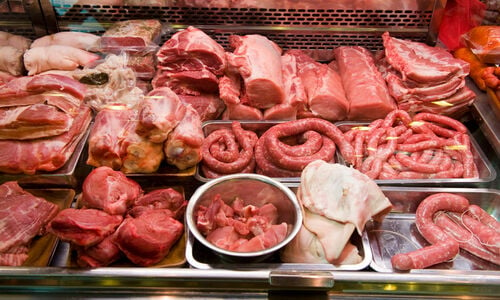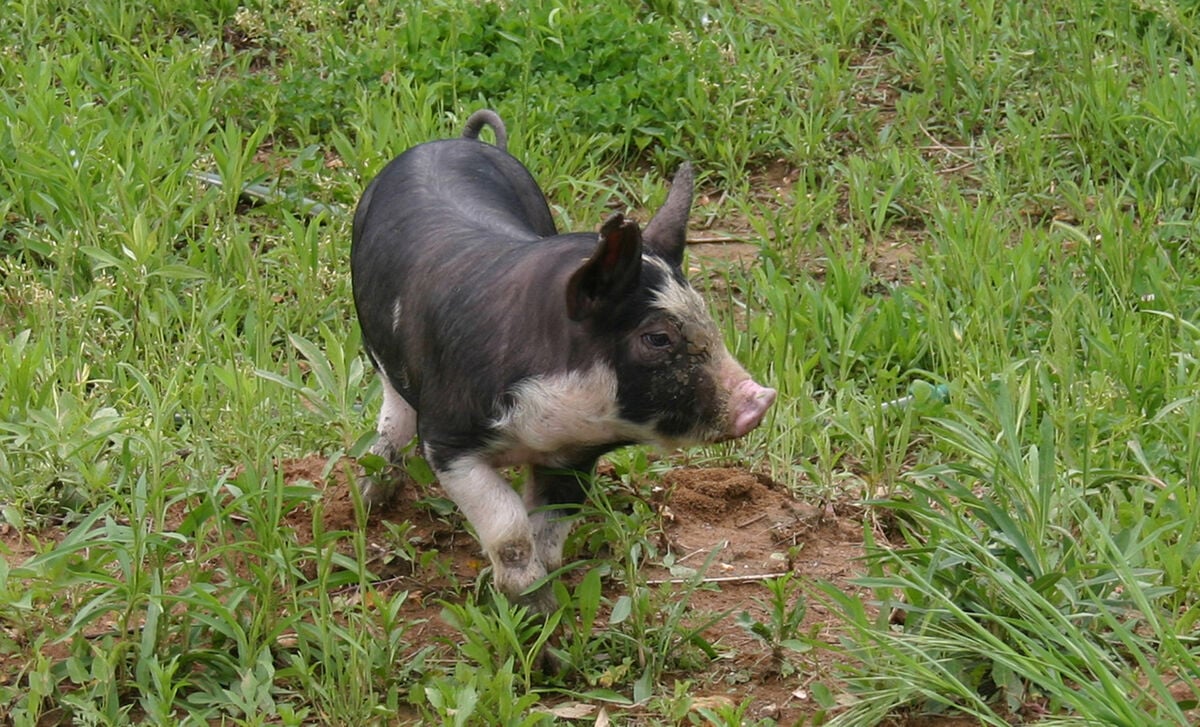
Berkshire Pig Farms
D’Artagnan sources all heritage and Berkshire pork from a cooperative of farms at the foot of the Ozark Mountains. A group of about a dozen family farmers raise Berkshire hogs on pasture, with access to individual houses, water and supplemental grain feed. Families of pigs are left together, to forage and frolic outdoors in pasture land. The cooperative is strict about banning the use of antibiotics and hormones on each farm, and about limiting the number of hogs the farms raise. They seek to add another farmer to the cooperative before they add more pigs to any one farm. They are paid a premium for their humanely-raised pork, making the small farm a profitable business, and proving that there might be a future in the old breeds after all.
History of Berkshire Pork
One of the oldest identifiable breeds of pig, the Berkshire hog was introduced to the United States in the early 1800s. The Berkshire breed offered an improvement to the general hog population when crossed with that stock. The fear that the breed would be completely diluted led breeders to start the American Berkshire Association in 1875, the first swine group and registry in the world. The founding of the ABA was met with enthusiasm by the breeders in the U.S. and in England, and it was agreed that only hogs from English herds or hogs that could be traced back to them would be registered. The first boar to be recorded in the registry was Ace of Spades, bred by Queen Victoria herself. Today, many of our Berkshire breed pigs are descended from these original registered animals.
Berkshire Pork Versus Regular Pork
Berkshire pork is special. It looks different than the pork you know. As tastes changed, modern lean hogs were bred to have very little fat, which is why most pork is more akin to chicken these days. But Berkshire pork is succulent with a distinctive porky flavor. The meat from Berkshire hogs is redder than conventional pork, somewhat sweeter, and laced with intramuscular fat, which makes it more tender and juicy. This is pork the way it’s supposed to be. Once you try Berkshire pork, you will have a hard time going back to that “other white meat.”
Berkshire Pork Today
Thanks to an increased interest in heritage breeds and traditional foods among the culinary cognoscenti, there are more farmers raising them for the market, even crossing the hardy stock with other heritage breeds. As industrial farms crowd out the small farmers, many are turning to heritage breeds like the Berkshire pig and raising them in the old ways, in small-scale operations. Chefs across the country will gladly pay more for quality Berkshire pork, raised naturally, on pasture, and farmers are meeting the demand.
